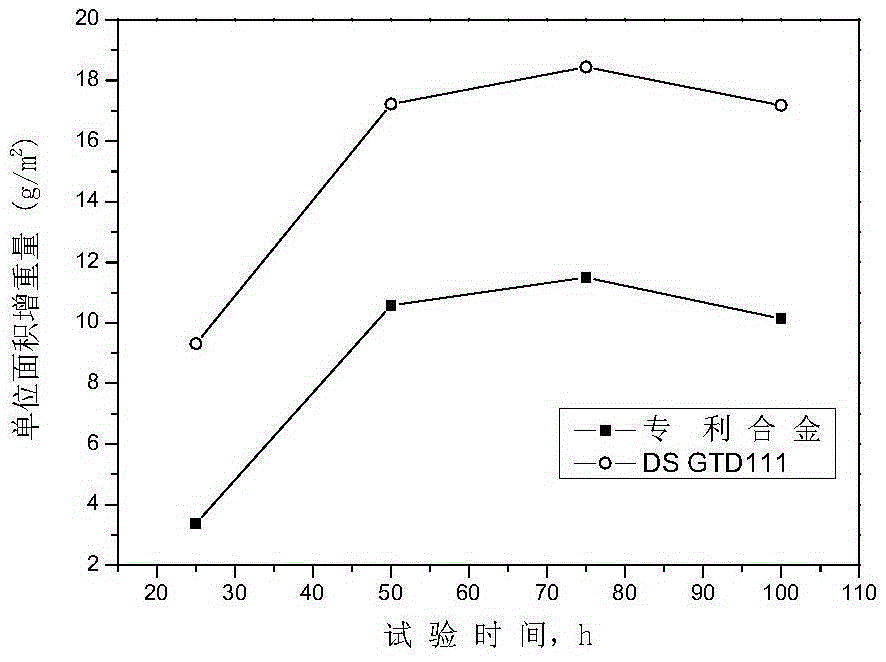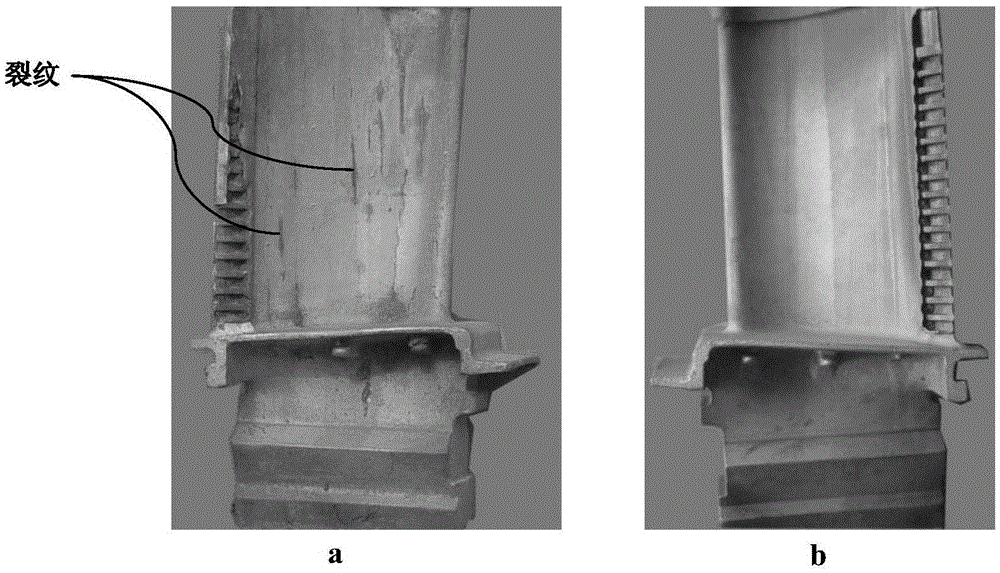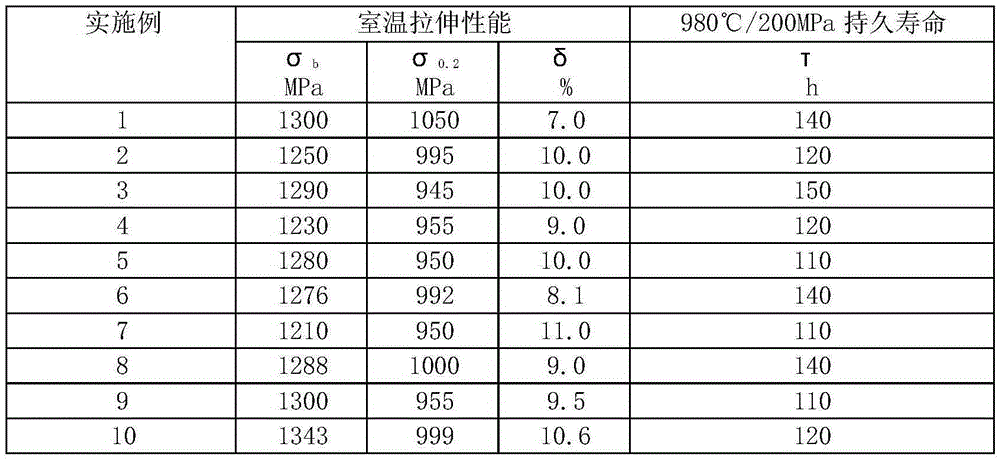High-temperature alloy casting resistant to high-temperature hot corrosion
A technology of superalloys and castings, which is applied in the directions of casting molds, casting mold components, casting molding equipment, etc., can solve the problems of low temperature bearing capacity, difficult turbine blades, and difficulties with large-sized blades, and achieves heat-resistant corrosion performance and microstructure stability. The effect of improved performance, good casting process performance and excellent hot corrosion performance
- Summary
- Abstract
- Description
- Claims
- Application Information
AI Technical Summary
Problems solved by technology
Method used
Image
Examples
Embodiment 1-10
[0018] Embodiment 1-10 alloy composition
[0019] The chemical composition and mass percentage of the alloy are: Al3.8~6.0%; Ti0.5~3.5%; Cr10.0~12.0%; Ta5.0~7.0%; Co8.0~10.0%; W4.0~ 7.0%; Mo1.0~3.0%; Hf0~3.0%; Re0~4; C0.02~0.15%; B0.002~0.02%, the balance is nickel; Al, Ti, Hf and C+B in the alloy The chemical composition is controlled in the following ratio, 1.0≤(Al / Ti)≤11, Hf0~3.0%; among them, when 1.0≤(Al / Ti)≤1.6, Hf0~0.5%, 0.022≤C+B≤0.09 ;When 1.60.09; when 2.50.09 . Table 1 lists embodiment 1-10 composition and proportioning (by weight percentage).
Embodiment 1
[0021] The composition of the high temperature and corrosion resistant superalloy involved in this embodiment is calculated by weight percentage, as shown in Example 1 in Table 1, and the composition in Example 1 in Table 1 is used to cast a large-size directional solidification with a length of more than 200 mm. Single crystal gas turbine blades.
[0022] In this embodiment, the double vacuum induction method is used for smelting. According to the required target components, the ingredients are proportioned according to the proportion, and put into the vacuum induction melting furnace for melting, and the master alloy ingot is cast. This process needs to go through melting-refining-cooling-alloying -Pouring is done in five steps. In the melting step, nickel, cobalt, molybdenum, tungsten, tantalum, chromium, carbon, and rhenium are directly loaded into the crucible, and refined for 40 minutes after refining. For titanium, stir after 3 minutes of smelting, then add boron and h...
Embodiment 2
[0024] The composition of the high-temperature and hot-corrosion-resistant superalloy involved in this example is calculated by weight percentage, as shown in Example 2 in Table 1. The composition in Example 2 in Table 1 is used to cast a directionally solidified columnar crystal test rod.
[0025] In this embodiment, the double vacuum induction method is used for smelting. According to the required target components, the ingredients are proportioned according to the proportion, and put into the vacuum induction melting furnace for melting, and the master alloy ingot is cast. This process needs to go through melting-refining-cooling-alloying -Pouring is done in five steps. In the melting step, nickel, cobalt, molybdenum, tungsten, tantalum, chromium, carbon, and rhenium are directly loaded into the crucible, and refined for 40 minutes after refining. For titanium, stir after smelting for 10 minutes, then add boron and hafnium and stir after smelting for 10 minutes to promote t...
PUM
| Property | Measurement | Unit |
|---|---|---|
| length | aaaaa | aaaaa |
| tensile strength | aaaaa | aaaaa |
| yield strength | aaaaa | aaaaa |
Abstract
Description
Claims
Application Information
 Login to View More
Login to View More - R&D
- Intellectual Property
- Life Sciences
- Materials
- Tech Scout
- Unparalleled Data Quality
- Higher Quality Content
- 60% Fewer Hallucinations
Browse by: Latest US Patents, China's latest patents, Technical Efficacy Thesaurus, Application Domain, Technology Topic, Popular Technical Reports.
© 2025 PatSnap. All rights reserved.Legal|Privacy policy|Modern Slavery Act Transparency Statement|Sitemap|About US| Contact US: help@patsnap.com



